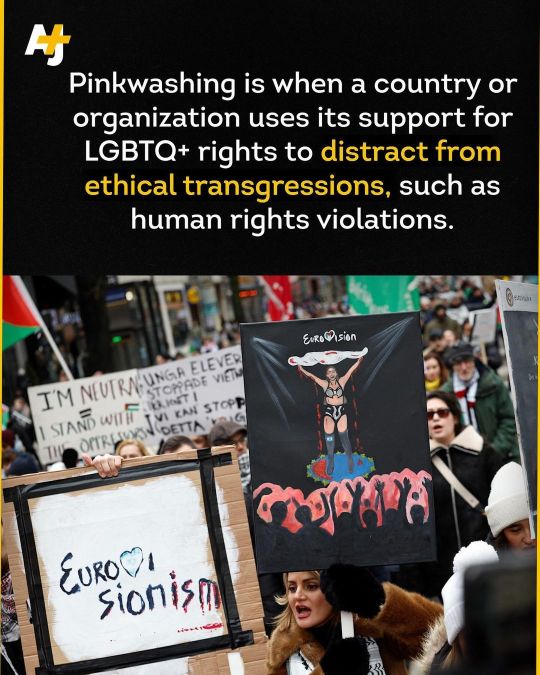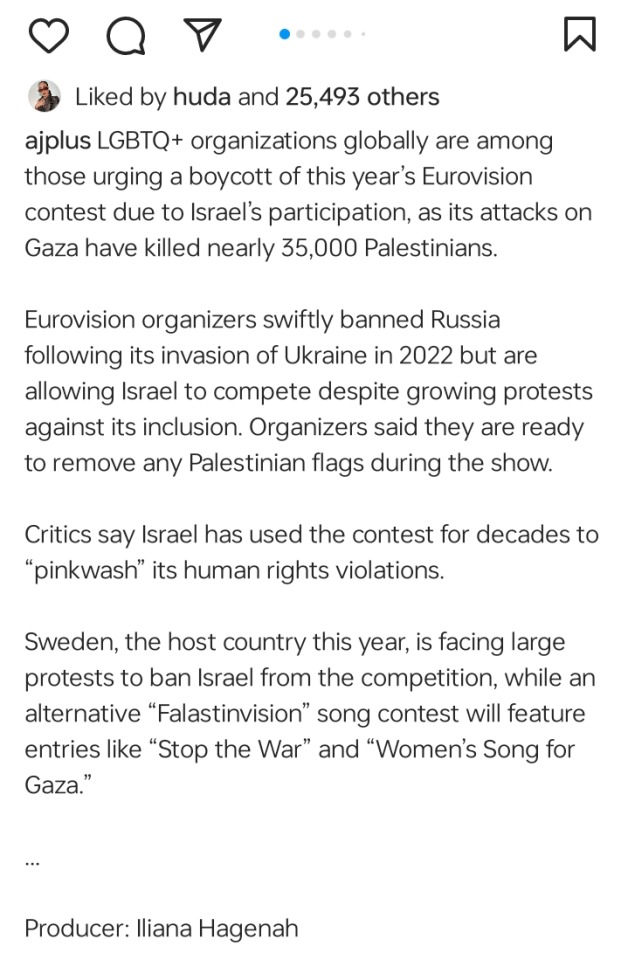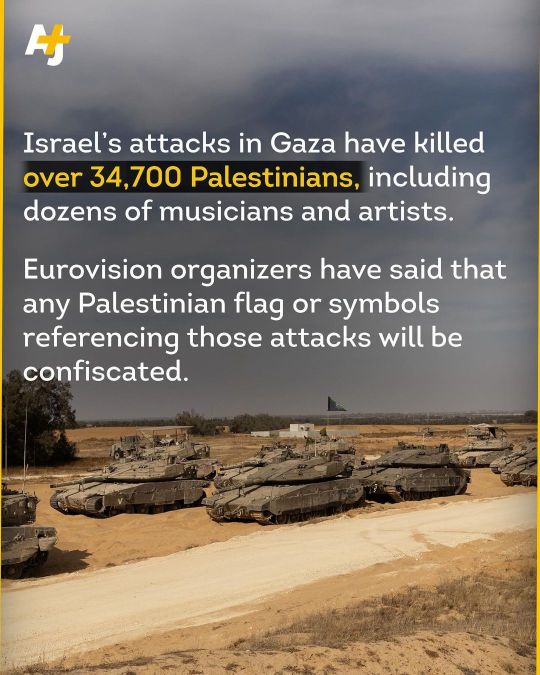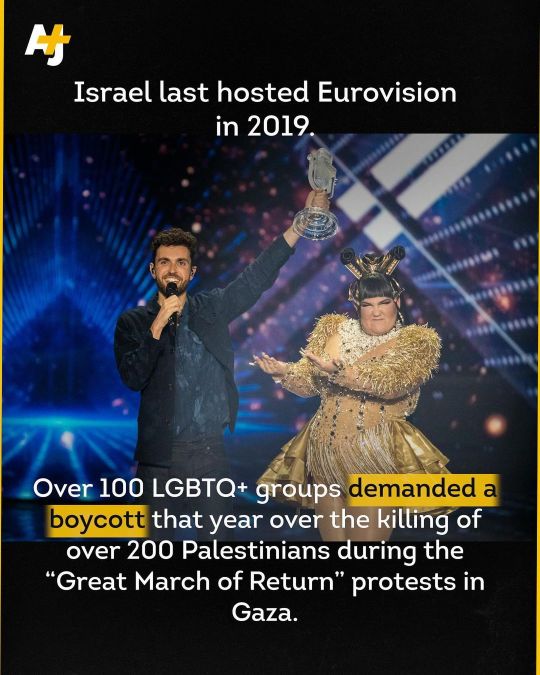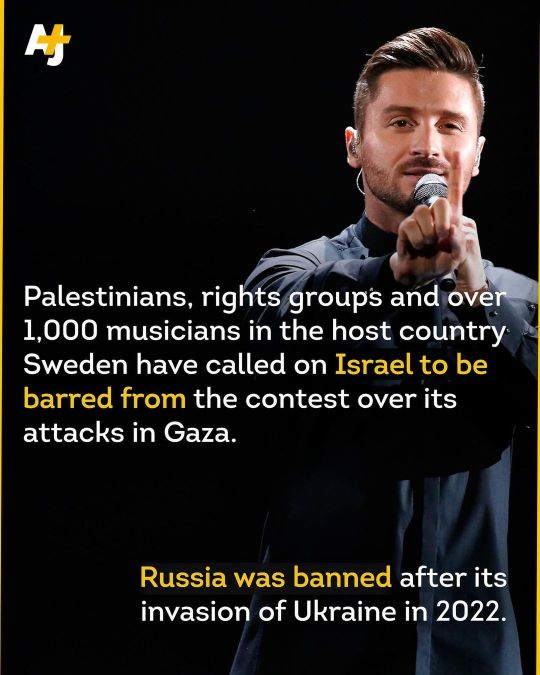Text
Friend Like Me: Murderbot's Relationships With Other AIs throughout The Murderbot Diaries
It’s important to me that the thematic core of The Murderbot Diaries is not only about determining what it means to be a robot person in a human world, but about showcasing so many ways to be a robot person in a human world. And about building relationships with other robot persons to support that self-actualization as both a robot and a person.
So often, in science fiction about robot personhood, the robot character is the only robot in the cast. Not only that, so often the robot character is the only robot they know.*
When media thinks about AI personhood, or Ais as characters in society, the AI character is often alone. Alone, and different. It’s a potent allegory for what it feels like to be an outsider, to be “other,” to feel “off” from the people around you. Whether a sympathetic friend or a scary unknowable villain, a lot of people can relate to feeling like that.
The Murderbot Diaries is doing something interesting, then, by showing us our protagonist Murderbot, the prototypical robot-among-humans, the robot as a parallel for queer and neurodivergent and outsider-cultural experiences in a world of expected norms, the robot with human friends, the one robot member of an otherwise all-human team… and it can’t live like that. So it leaves.
So far, the series feels split into two halves: the first four books, about Murderbot learning different ways to be a robot in relationships with humans, and the next three** about Murderbot learning different ways to be a robot in relationships with other robots, and a robot in a mixed society.
In All Systems Red, Murderbot starts off painfully alone. It repeatedly sees other SecUnits as enemies, and believes that SecUnits can't trust each other because they're all under control of humans. It has a very low opinion of SecUnits, including itself. Murderbot hates being used by humans for violence or for petty reasons, and admits that it wants to half-ass its job.
In Artificial Condition, Murderbot meets ART, a university research ship who loves its crew and loves its function. It is also free to be a snarky asshole, as Murderbot repeatedly notes (and assigns in its very name). This relationship to humans—genuinely caring for its crew, genuinely wanting to participate in its research and teaching function—is a very different relationship than Murderbot has had, though ART still needs to keep its intelligence and personality hidden from most humans for its own safety. Conversely, this is the book where Murderbot meets a ComfortUnit that is blatantly being abused and misused by its human owner, and it hates her. The contrast between ART and the ComfortUnit displays very different ways of Ais relating to their human “owners”—and what it means for them to get what they want out of life.
In Rogue Protocol, Murderbot confronts this theme most directly, with the bot Miki. Unlike the implications of secrecy we get from ART, Miki is not hidden from anybody; unlike with the ComfortUnit, Miki is a respected and equal member of its team. Murderbot has a very hard time believing that Miki is anything but a patronized “pet bot” to these humans, despite the evidence that the humans genuinely consider it a friend and teammate. Miki has never been abused, and never had to hide. Murderbot has a hard time accepting that this is a way bots and humans can relate to each other.
But Miki is still, in the classical sci-fi robot-on-a-human-team way, unique; it expresses to Murderbot, “I have human friends, but I never had a friend like me.”
This is a much better way of being a robot among humans than Murderbot has seen before, but it’s still not the ideal Murderbot wants, either.
Exit Strategy brings the theme full-circle and the quartet to a close. Murderbot faces off against a Combat SecUnit (or CombatUnit; Wells seems to change her mind about this). The Combat SecUnit represents everything Murderbot has rejected being, everything it has overcome on its journey of self-actualization. During their fight, the CSU rejects Murderbot’s offers of freedom, money, a fake ID, the opportunity to get out of its situation the way Murderbot has; it ignores the offer. Murderbot asks the CSU what it wants. The CSU replies, “I want to kill you.” The CSU represents the kind of SecUnit Murderbot does not want to be, the kind of robot it used to think it would inevitably be but has now seen so many other ways it can be. Murderbot says in the same scene, “I’m not sure it [the offer of freedom] would have worked on me, before my mass murder incident. I didn’t know what I wanted (I still didn’t know what I wanted)…” But at the same time, the confrontation makes it clear: Murderbot knows some things it doesn’t want, and the CSU is embracing everything Murderbot doesn’t want about being a SecUnit.
If this quartet is about what it means to be a robot, and to be a robot among humans, then the next set of books (Network Effect, Fugitive Telemetry, and System Collapse) is about being a robot among other robots, and a robot in a society that supports both humans and robots.
Fugitive Telemetry makes this most obvious, with its plotline about the free bot community on Preservation. Murderbot is uncomfortable around them in a similar way that it was uncomfortable around Miki. The Preservation bots are happy, fulfilled, responsible, mutually supportive, and have a meaningful community with both humans and each other that does not match Murderbot’s experiences of what being a bot, or being a bot among humans, means.
Network Effect brings Murderbot back into contact with ART, and introduces a new SecUnit, Three. Murderbot navigating its relationship with ART as a free agent and after a perceived betrayal is a huge part of the book. Murderbot’s disembodied-software-fork Murderbot 2.0, freed from much of Murderbot’s organic anxiety, shows itself much more willing to be social with other bots and constructs. System Collapse follows, bringing further depth and complexity to Murderbot’s relationship with ART and expanding its interactions with Three, and furthers Murderbot’s integration into the casual bot-human community that is ART’s crew. It also shows that Murderbot’s willingness to trust and even form tentative friendships with other AIs and systems, like AdaCol2, has expanded. The way it extends the governor module hack to the opposing SecUnits is informed a lot more strongly by Murderbot 2.0’s interactions with Three than its own previous clumsy attempts to reach out to the CSU in Exit Strategy, or abrupt dumping of the hack on the ComfortUnit in Artificial Condition. All of these plotlines emphasize Murderbot maturing into not just being a person among humans, but a person recognizing its place and obligations within society that includes both people like and unlike it.
The models of the many ways to be a robot person, and significant relationships and interactions with other robot persons, were and are crucial to Murderbot’s development, sense of self, articulation of its desires, and sense of belonging in the world. Murderbot isn’t alone, and it’s not the only person like itself that it knows. When offered a place in society, it is not the only person like itself in that society. Meeting other AIs, forming relationships with them, was crucial in helping it articulate what it wants in its life. Its human friends are incredibly important to it! That doesn’t stop being true. But so are its AI friends, and the other AIs it passed through the lives of.
This feels like one of the most honest and affirming depictions of what it’s like to feel “other”—that being around only majority people unlike-you, even the ones you like, even your friends, even the ones who mean the best for you and ask you what you need and do everything they can to provide it, can still be exhausting and alienating. Meeting other people like you—even if they’re like you in unlike ways, and have different ways of moving through the world—shows you the many ways to relate to the rest of the world, to be in the world. The many ways to relate to other people and to yourself. The Murderbot Diaries opens up a world where that can be true of bot/construct/AI characters, when so often in sci-fi, their loneliness and alienation is where the metaphor stops.
- - -
*Lt. Data from Star Trek: The Next Generation is probably the most famous example; the only positronic android like himself in existence, barring his evil twin who mostly just needs to be stopped. Others coming to mind include Becky Chambers's A Closed and Common Orbit, in which the AI character is trying to understand who she is in the context of being surrounded by humans; Alien, the secret android crewmate among humans is a threat, and in the sequel Aliens, the android crewmate is earnestly trying to prove he's not; Space Sweepers has a ragtag crew of several humans and a robot; most of the stories in Isaac Asimov's I, Robot are about a singular robot in a human facility. The setup "Human crew with their ship AI" is fairly common in sci-fi, from 2001: A Space Odyssey with its tragically antagonistic HAL9000 operating on a logic that would never occur to humans, to Wolf 359 and The Long Way to a Small Angry Planet where the ship AIs are struggling to determine and articulate how they want to relate to their human friends. Even in Ancillary Justice, Breq is alone and having to pass undercover as human cut adrift from her previous life as a ship's AI. (I know this changes later but I have not actually read the rest of the trilogy)
**as of System Collapse
#yeah!!#exactly!!!#this meta is articulating something i never realized i needed to see articulated about being an Other and relating to other Others#how to become a person among people. how to become a person among the people who are Other like you#yeah!!!!#MurderMetaMay#Murderbot#meta#murderbot diaries
73 notes
·
View notes
Text
"being queer is about love" hmm actually being queer is about defying societal norms about gender and sexuality and does not depend on feeling love at all
9K notes
·
View notes
Text

Welcome to #MurderMetaMay!
This is a event for creating, sharing, and enjoying meta for The Murderbot Diaries. Our AO3 collection is accepting submissions from now through June 8.
We have weekly "themes" and bunch of meta prompts in the AO3 collection to get you started on making meta! But feel free create works that don't fit into specific prompts. Follow your meta-analysis heart.
Week 1 (May 1 - May 10): Inside: close readings & character analysis
Week 2 (May 11 - May 17): Outside: connections to other media, social issues, etc.
Week 3 (May 18 - May 24): Outside-In: expanding the setting via speculative additions
Week 4 (May 25 - May 31): Inside-Out: personal reflections of how the books have shaped how you feel, think, and live
If you post your works to tumblr, remember to use the tag #MurderMetaMay
For more detail about the event, and prompts to get your meta-thoughts flowing, check out our AO3 collection!
(This blog's header image is from the free-to-read pre-series short story by Martha Wells, "The Future of Work: Compulsory," hosted on WIRED and illustrated by Tracy J. Lee.)
84 notes
·
View notes
Text
[Draft] Why Roadside Picnic is a timeless masterpiece and why everyone missed the point
(DRAFT NOTE: Otherside Picnic and PAFL are tagged because I intended to conclude this essay by explaining why I think those works, ostensibly inspired by R.P., don’t understand and fail to capture what makes the novel so powerful. My writing never got to that point, but it might still be of interest to fans of Otherside Picnic and PAFL, so I’ve kept the tags.
If I ever manage to somehow finish this, I’ll take it down and replace it with the full version.)
ESSAY START:
With that needlessly provocative title out of the way, I hope people are still here and willing to listen as I try to explain myself:
[SPOILERS FOR THE WHOLE BOOK, GO READ IT IF YOU HAVEN’T DONE SO YET]
Keep reading
#ooh#scintillating analysis of this book op. excellent choice of quotes to highlight the themes of capitalist exploitation here#great structure too- I like how cleanly each point is laid out to highlight how the systems of capitalism#are catalyzing the protag's descent into moral reprehensibility#would love to read the rest if you ever write more!#'the force consuming and destroying the lives of the Stalkers is not [the cosmic horror]. it's Capitalism'#aughghghh THAT's how you write excellent commentary on capitalism in scifi/horror#it's clearly not a comfortable read. but capitalism and analyzing capitalism aren't a comfort read activity.#capitalism#roadside picnic#horror#science fiction#meta#literary analysis#queue
124 notes
·
View notes
Text
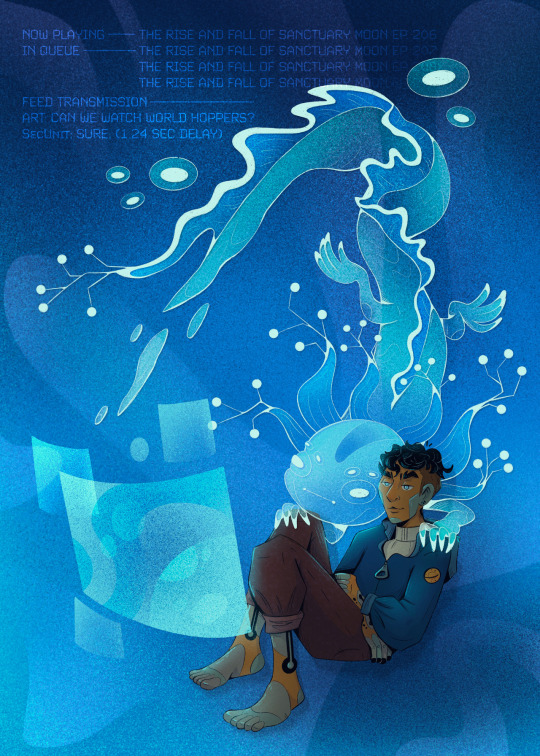
Murderbot + ART + hours and hours of media
51 notes
·
View notes
Text
sharing pronouns with murderbot is such a privilege you don't understand
23 notes
·
View notes
Text
I moral lesson I wish literally everybody would learn is this: the very same actions that keep you safe when you are powerless can be abusive when you hold power over someone. The difference between resisting subjugation and subjugating others is often more a matter of context than anything else. And when context changes, it can be hard to relearn one's behavior—it requires an active effort. Probably all of us have hurt others needlessly, in some way or another, by doing things out of a reactive instinct for self-preservation. Probably all of us have been hurt by others, sometimes very deeply, when they were acting out of the same instinct.
I don't like speaking about ethics in the language of blame, but insofar as blame is a coherent notion to begin with, I'll say this: neither is anyone evil for the failure to fully rework themselves and free themselves of bad habit after struggle, nor does the difficulty of reworking oneself excuse the abuse of others. Nor, though we may wish otherwise, is it always epistemically possible to our own actions with confidence in one camp or the other. We can only do our best to treat others well and at the same time ourselves, though it is often not clear how.
7K notes
·
View notes
Text
Vetted fundraiser masterpost-masterpost.
This is a collection of links to various posts concerning fundraisers I've vetted and instructions on how to submit fundraisers to me. These are primarily ones for Ghazzan families although some fundraisers for Sudanese families are also listed (I'm more familiar with my own country's politics and dialect and am more capable of vetting fundraisers for Palestinians as a result). Each post will have a time stamp indicating the latest date of update. And fundraisers will have colour-coded disclaimers according to the particularities of their case.
I know that people do not like clicking on links or navigating between posts, but please actually look through these posts and choose a fundraiser to donate to. Please.
Instructions on how to submit a fundraiser. (for those not Ghazzan)
تعليمات لتقديم طلب توثيق و نشر حملات التبرعات الخاصة بالغزاويين و عائلاتهم (للغزاويين فقط) سأنشر البوست قريبا
List of fundraisers for direct contacts from Ghazzah. - PRIORITY.
Vetted family evacuation fundraisers list 1. - Particularities Listed.
Vetted family evacuation fundraisers list 2.
Unvetted but highly likely legitimate fundraisers.
Additional fundraisers for various purposes.
9K notes
·
View notes
Text
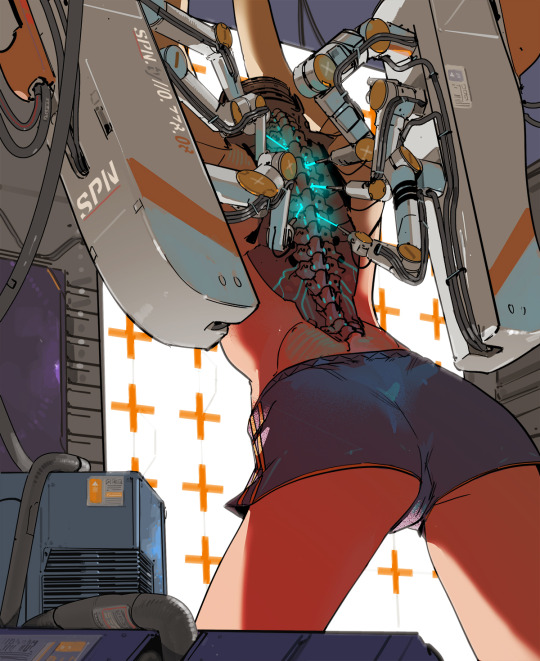
Column maintenance.
#my sunglasses fall down my face as I stare#hot damn#robots and ai#robofuckery#inspiration for#paragon and the dragon#queue
4K notes
·
View notes
Note
Hey, would you be willing to elaborate on that "disappearance of the Anasazi is bs" thing? I've heard something like that before but don't know much about it and would be interested to learn more. Or just like point me to a paper or yt video or something if you don't want to explain right now? Thanks!
I’m traveling to an archaeology conference right now, so this sounds like a great way to spend my airport time! @aurpiment you were wondering too—
“Anasazi” is an archaeological name given to the ancestral Puebloan cultural group in the US Southwest. It’s a Diné (Navajo) term and Modern Pueblos don’t like it and find it othering, so current archaeological best practices is to call this cultural group Ancestral Puebloans. (This is politically complicated because the Diné and Apache nations and groups still prefer “Anasazi” because through cultural interaction, mixing, and migration they also have ancestry among those people and they object to their ancestry being linguistically excluded… demonyms! Politically fraught always!)
However. The difficulties of explaining how descendant communities want to call this group kind of immediately shows: there are descendant communities. The “Anasazi” are Ancestral Purbloans. They are the ancestors of the modern Pueblos.
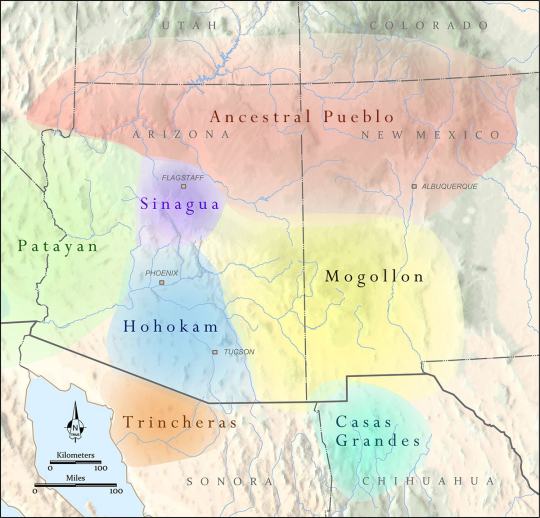
The Ancestral Puebloans as a distinct cultural group defined by similar material culture aspects arose 1200-500 BCE, depending on what you consider core cultural traits, and we generally stop talking about “Ancestral Puebloan” around 1450 CE. These were a group of people who lived in northern Arizona and New Mexico, and southern Colorado and Utah—the “Four Corners” region. There were of course different Ancestral Pueblo groups, political organizations, and cultures over the centuries—Chaco Canyon, Mesa Verde, Kayenta, Tusayan, Ancestral Hopi—but they generally share some traits like religious sodality worship in subterranean circular kivas, residence in square adobe roomblocks around central plazas, maize farming practices, and styles of coil-and-scrape constructed black-on-white and black-on-red pottery.
The most famous Ancestral Pueblo/“Anasazi” sites are the Cliff Palace and associated cliff dwellings of Mesa Verde in southwestern Colorado:


When Europeans/Euro-Americans first found these majestic places, people had not been living in them for centuries. It was a big mystery to them—where did the people who built these cliff cities go? SURELY they were too complex and dramatic to have been built by the Native people who currently lived along the Rio Grande and cited these places as the homes of their ancestors!
So. Like so much else in American history: this mystery is like, 75% racism.
But WHY did the people of Mesa Verde all suddenly leave en masse in the late 1200s, depopulating the whole Mesa Verde region and moving south? That was a mystery. But now—between tree-ring climatological studies, extensive archaeology in this region, and actually listening to Pueblo people’s historical narratives—a lot of it is pretty well-understood. Anything archaeological is inherently, somewhat mysterious, because we have to make our best interpretations of often-scant remaining data, but it’s not some Big Mystery. There was a drought, and people moved south to settle along rivers.
There’s more to it than that—the 21-year drought from 1275-1296 went on unusually long, but it also came at a time when the attempted re-establishment of Chaco cultural organization at the confusingly-and-also-racist-assuption-ly-named Aztec Ruin in northern New Mexico was on the decline anyway, and the political situation of Mesa Verde caused instability and conflict with the extra drought pressures, and archaeologists still strenuously debate whether Athabaskans (ancestors of the Navajo and Apache) moved into the Four Corners region in this time or later, and whether that caused any push-out pressures…
But when I tell people I study Southwest archaeology, I still often hear, “Oh, isn’t it still a big mystery, what happened to the Anasazi? Didn’t they disappear?”
And the answer is. They didn’t disappear. Their descendants simply now live at Hopi, Zuni, Taos, Picuris, Acoma, Cochiti, Isleta, Jemez, Laguna, Nambé, Ohkay Owingeh, Pojoaque, Sandia, San Felipe, Santa Clara, San Ildefonso, Tamaya/Santa Ana, Kewa/Santo Domingo, Tesuque, Zia, and Ysleta del Sur. And/or married into Navajo and Apache groups. The Anasazi/Ancestral Puebloans didn’t disappear any more than you can say the Ancient Romans disappeared because the Coliseum is a ruin that’s not used anymore. And honestly, for the majority of archaeological mysteries about “disappearance,” this is the answer—the socio-political organization changed to something less obvious in the archaeological record, but the people didn’t disappear, they’re still there.
382 notes
·
View notes
Text
First you procrastinate on the task because it is not a big enough deal to get done urgently. Then you procrastinate on the task because it has become such a big deal that doing it is overwhelming. You would think that this implies a middle point where it is just big enough of a deal to get done easily, however the inherent perversity of the universe's causal geometry prevents this
#well so. the one useful thing i learned from my therapist who always consistently misgendered me#is that adhd is motivated mostly by stuff that can be broke down into four categories:#Challenge Interest Novelty and Urgency#you notice that how *Important* something is does not feature here. it can be the most important thing in the world#and that's merely overwhelming- not motivating.#at first it's not Urgent enough to motivate you. then it rapidly becomes more urgent the closer your time-blind ass approaches the deadline#and sometimes it drives you to superhuman feats of executive function. but more often#you are overwhelmed by the enormity of the thing before you and filled with shame that you're here once again#unable to do the thing you wanted to do#and at no point does the bigness of the deal mean you are going to get it done.#sorry op i didn't mean to spoil the funny joke. i'm just emotional today#adhd
51K notes
·
View notes
Text
Ever since that "can your fave survive castle Dracula" blog did Stephen Maturin I've been thinking about Temeraire Characters vs. Castle Dracula so here's the breakdown:
Laurence: About as good odds as the average Jonathan Harker. He has similar approach to religion (and would probably take the crucifix out of social obligation) and ability to manage the social situation with Dracula. He has experience being prisoner of various groups for various motives, and he has a tendency to accidentally make arrogant tyrants fall in love with him, so he's good on the "keeping Dracula's attention" front. If he managed to get in the baby situation he'd probably die because he'd try to save it (self-sacrificial martyr streak) but it's unlikely he'd end up in that exact spot with the vampire ladies since I think he'd be a lot more military and methodical about any exploring and always return to safe zones up until his actual escape attempt. Anyway if he lives long enough to try climbing he's home free, the man might not be a born and bred aviator but he's been climbing first ships' rigging and then dragon harness his entire life and once escaped a palace that was on fire by climbing down the outside. CAN survive.
Tharkay: As a major proponent of “if it sucks, hit da bricks,” Tharkay climbed out the window on night #1.
Granby: Granby would take the crucifix and from there it would mostly depend on how much Dracula finds him entertaining. Granby won't be polite about being imprisoned, and is used to Iskierka who will react to his protests by overruling him instead of getting bored and killing him. So i'm inclined to think Dracula would not find him so fun, in which case he probably would kill him early on. That said he could probably make the climb even one-handed. (again, burning palace experience) Could Survive but Probably Won't. Sorry Granby.
Jane Roland: I will be honest I do not see any situation in which Jane could be tempted into castle Dracula in the first place, at least not without Excidium also being there on a mission of destruction. She's more of a Quncy Morris type, only she wouldn't die because she'd be on the back of a fifteen ton dragon who will melt Dracula into a horrible goo from aloft. Survives, by virtue of not playing.
Arthur Hammond: I cannot stress enough how fast this man dies.
Temeraire: Is a dragon the size of a frigate with a sonic attack that regularly causes landslides. Castle Dracula does not survive him.
#whoa roachpatrol?? rb'd two of my friends in one fell swoop??#i used to follow that guy. followed him for nigh on 10 years#crazy how life goes sometimes#anyway it's a good post brent#temeraire#dracula#queue
355 notes
·
View notes
Text
What I need for White Americans (ppl in general really, but I'm talking to the U.S.) to understand about Americans of Color is that You don't know Us, but We know YOU.
We've spent generations upon generations of our entire lives learning YOUR social norms, forced to assimilate to YOUR idea of society. We live and learn entirely separate cultures, but we also learn from birth what it means to have to cater to Whiteness in America. It's why I can name so many famous movies with white casts, but most white people didn't even know where "Bye Felicia" came from. It's why I was raised to professionally Code Switch from childhood, but grown white people struggle to even grasp the basics of the grammar of AAVE. It's why people who speak different languages think they have to give up their own mother tongue just to function in this country.
It's why you all are so uncomfortable with the idea of people of color questioning and rejecting what seems "normal" to you- and to be honest, I actually think older white generations are better at admitting this than younger ones. It's because what you know as normal is usually not "normal"- it's White. Whiteness is just as loud as any other presentation of race in this country, you just don't see it that way because everyone else has been forced to maintain your comfort. The entire system is built around it, and you don't even know it.
It's why it frustrates white Americans of some marginalization- queer, disabled, neurodivergent- because you do not have access to the "norm" as it is shown to you. But that frustration- literally everyone of color (who shares those identities btw) lives under that understanding.
Idk, I didn't really have a direction. I just think it's wild how so many conversations require this... Constant Verbal Leveling of the Playing Field simply because Whiteness blinds white people to what things ACTUALLY look like out here.
7K notes
·
View notes
Text
having adhd makes all of your thoughts feel like a 7-way venn diagram
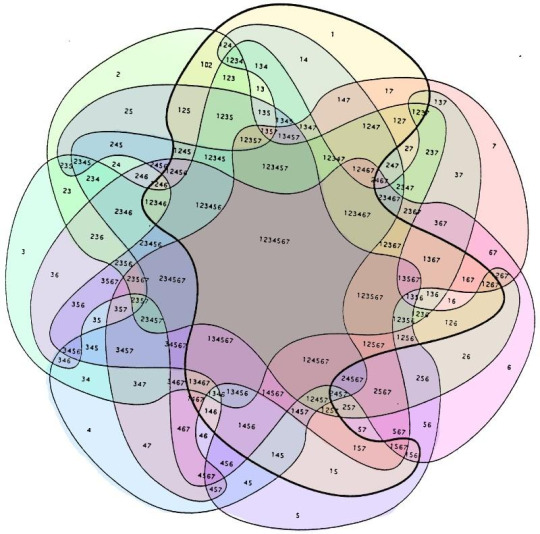
#it really is like that#also prev tags are satirically unhinged. good god the NHS is Like That huh#adhd#actuallyadhd#neurodivergence#queue
89K notes
·
View notes
Text
i can't lie to you i loveee bad endings sometimes. what if nothing worked out. what if the characters gave into their worst instincts. what if they became worse. what if there's truly no hope left. what will they do out of desperation? who will they become as their worst selves?
#tragedy#writing#yesssss#the NADIR of humanity. how can you understand what is best about us without plumbing the depths of the worst of what we make of ourselves#queue
17K notes
·
View notes
Text
Private Name
First a lovely quote from All Systems Red by Martha Wells. Here, one of the human characters reveals SecUnit’s private name to the rest of the group.
Some context for those that haven’t read the books: the group is being hunted, their equipment is failing, and SecUnit is considered (until this point) to also be equipment. And now they’ve just discovered that a.) the thing that’s supposed to be controlling SecUnit is not functioning correctly and therefore b.) SecUnit is actually doing everything of its own free-ish will.
The silence was worse this time. On the feed I saw Pin-Lee move uncertainly, glance at Overse and Arada. Ratthi rubbed his face. Then Mensah said quietly, “SecUnit, do you have a name?”
I wasn’t sure what she wanted. “No.”
“It calls itself ‘Murderbot,’” Gurathin said.
I opened my eyes and looked at him; I couldn’t stop myself. From their expressions I knew everything I felt was showing on my face, and I hate that. I grated out, “That was private.”
The silence was longer this time.
Then Volescu said, “Gurathin, you wanted to know how it spends its time. That was what you were originally looking for in the logs. Tell them.”
Mensah lifted her brows. “Well?”
Gurathin hesitated. “It’s downloaded seven hundred hours of entertainment programming since we landed. Mostly serials. Mostly something called Sanctuary Moon.” He shook his head, dismissing it. “It’s probably using it to encode data for the company. It can’t be watching it, not in that volume; we’d notice.”
I snorted. He underestimated me.
Ratthi said, “The one where the colony’s solicitor killed the terraforming supervisor who was the secondary donor for her implanted baby?”
Again, I couldn’t help it. I said, “She didn’t kill him, that’s a fucking lie.”
Ratthi turned to Mensah. “It’s watching it.”
In the middle all of this, Gurathin chooses to reveal SecUnit’s chosen name for itself.
Murderbot is what the sapient construct has named itself and written in what is essentially its diary. Gurathin looks through that diary out of necessity. He and Volescu absolutely don’t know whether SecUnit is part of the sabotage going on all over their habitat until they look at the logs (and frankly not even fully then).
But sharing the name is a violation of MB’s right to privacy. It doesn’t want to share, and it says as much.
I think Gurathin does what he does under some very tense and difficult circumstances, and his behavior is understandable (if not excusable necessarily). And the book sets up some very nice tension for the sequels.
But, the moment itself still rings of personal violation to me. And I think it was intended that way, to create a minor antagonist who turns out to be an ally as the books progress.
438 notes
·
View notes



